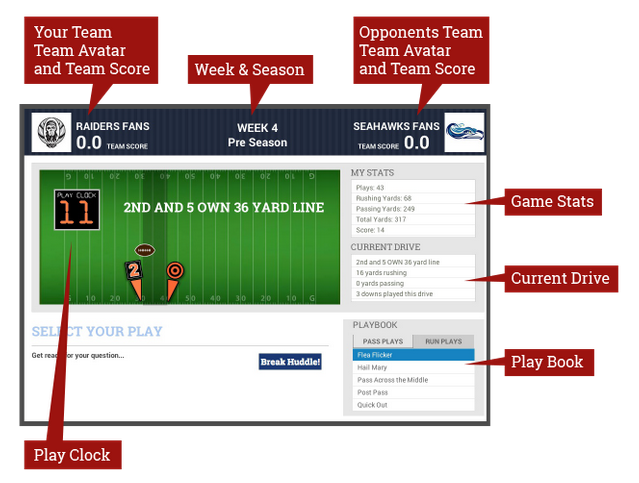The advent of NFL Sunday Ticket on DirecTV must have felt like a godsend for re-located football fans across the country. Never again would they have to comb through the TV schedule to see if their favorite team played in the local market, or perhaps got a Sunday night or Monday night game. All they had to do was pay a lot of money and plop down in front of the TV. But as our culture turns ever more mobile, we have different needs. It’s no longer good enough to have all the games on our TV. We want them with us wherever we go. Enter the NFL Sunday Ticket mobile app.
We’re officially through our first NFL Sunday of the 2014/15 season. My favorite team got drubbed on Thursday, so this left me some time to test out the NFL Sunday Ticket app for iOS. It’s hard to talk about the app without first discussing the price. It’s technically free in the app store, but you won’t be able to get past the login screen unless you are a subscriber of Sunday Ticket. And even then, you need to have the right version of Sunday Ticket. Spoiler: you need to more expensive one.
DirecTV offers two different packages in which to get games: Sunday Ticket and Sunday Ticket Max. The former will get you the bare-bones setup for $39.99 a month: all the games, the Mix Channel that allows you to watch eight (tiny) games at once, and various on-demand features. Sunday Ticket Max comes in at a whopping $54.99 a month, and adds the Red Zone channel (which is actually pretty cool) and the ability to watch games on a computer, phone, tablet, or gaming console (XBOX One, PS3, or PS4). So basically, it’s an extra $15/month to stream games on the go. Sunday Ticket bills for six months, so it’s an extra $90 on top of regular Sunday Ticket which is already on top of your DirecTV package. (It is possible to get Sunday Ticket without a DirecTV subscription, but there are a good deal of requirements that must be met.)
When you first open the app, you are greeted with an advertisement. Though it only lasts for a few seconds, it seems like an incredible kick in the pants to have to see an ad in a service you paid a great deal of money for. You are then greeted with the opening screen which has a video player on the right, and the list of current games and scores on the left. Just tap a game to watch. It’s that easy.

Switching between games is very fast, a nice feature that other apps like MLB.tv lack. After tapping a game, the video was up in less than a second. This was true on WiFi or 4G, though the WiFi offered a higher-quality video at first. The 4G connection needed some time before the picture was HD-quality. There is a tradeoff, however, as there seems to be a significant delay in the streamed games and actual games. Using the Bills/Bears game as a test, the app stream clocked in at around 43 seconds behind the game on TV. The amount that this is a big deal depends on the watcher. If you’re just clicking around during commercials, it really doesn’t matter all that much. If you are following along on Twitter (on another device, presumably) it might.
The app offers a few other nice features, like on-demand highlights from the game you are watching listed below the video. If you turn to a game and want to see how the score ended up the way it is, the video evidence is right there. The app also pushes highlights from other games that appear as little widgets on the video screen. If you click one, you are sent to the highlight, then, when it’s over, immediately back to the game you were watching. The widgets only show for a few seconds, so they are not too intrusive, and the ability to see an insane down-the-field-catch on the fly is a nice thing.

Overall, the app performed well. I only had one instance of it misbehaving over the course of a couple hours of heavy game switching. The glitch was fixed on a close and relaunch of the program. It was annoying, but the app cooperated much more than some from other leagues (cough, cough, MLB). There was also a slight issue with audio where after switching to a different game, the audio would be loud for about three seconds, then drop in volume quite a bit. This seemed to happen on all games. The first three seconds weren’t painful, but the dropoff was so drastic that I often found myself adjusting the volume.

The Sunday Ticket app would work well for football junkies, fantasy junkies, gamblers, or people who can’t be homebound on a Sunday. The app works very well, and does exactly what you want it to do — stream all out-of-market games — with solid performance. For the fan who just wants to watch their team on their couch every Sunday, it might not be worth the price of Sunday Ticket Max. The addition of the Red Zone Channel is a bonus, but if the main goal is just to watch your team, you might be better off with the standard package. Going on just the features and reliability of the app alone, DirecTV has put out a fairly solid product.
Grade: A-




